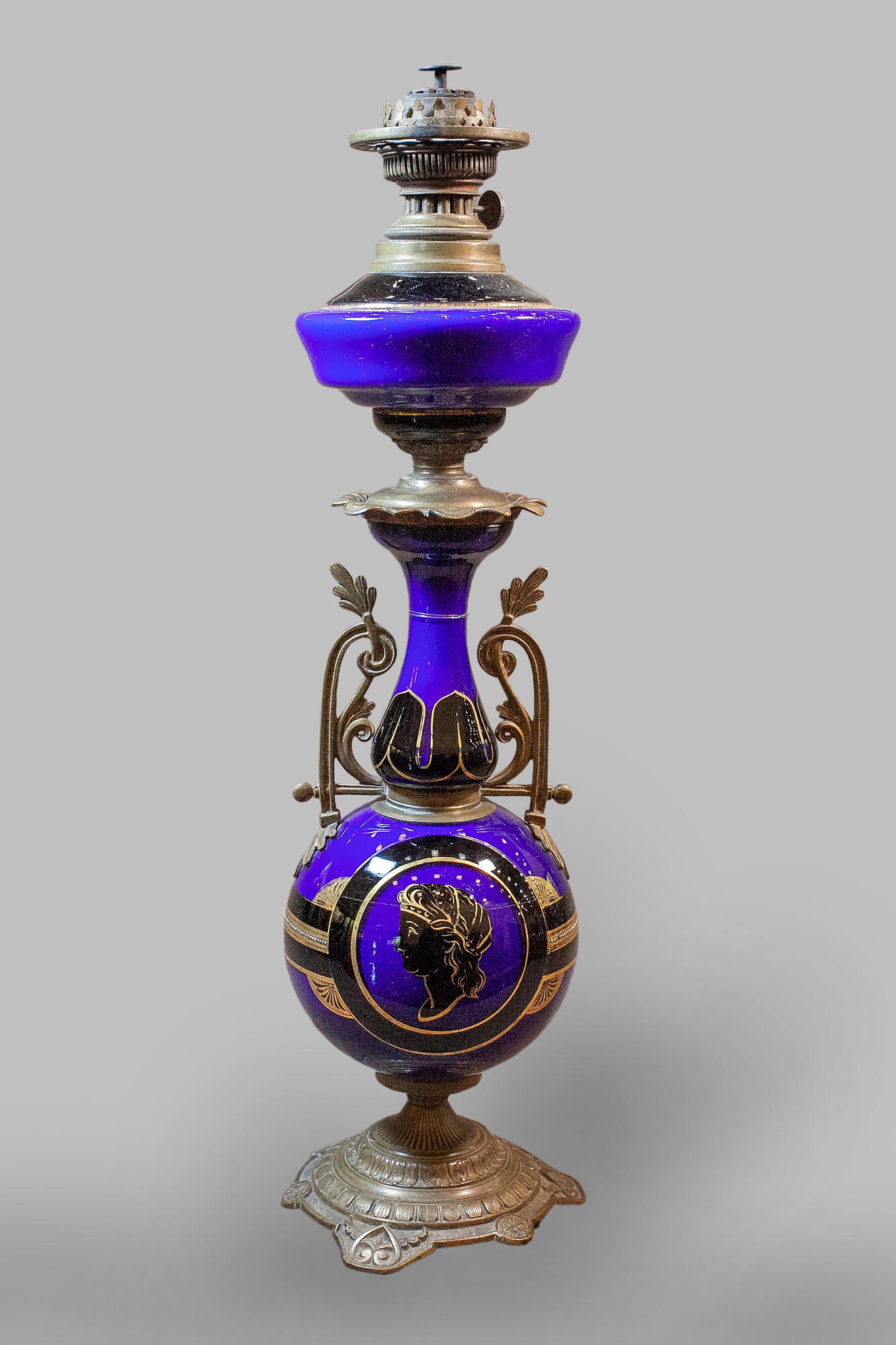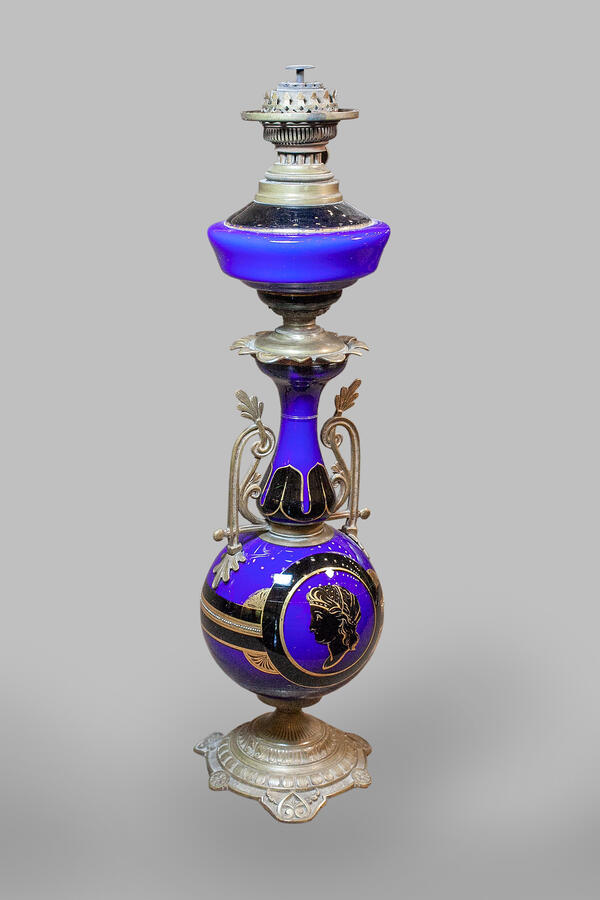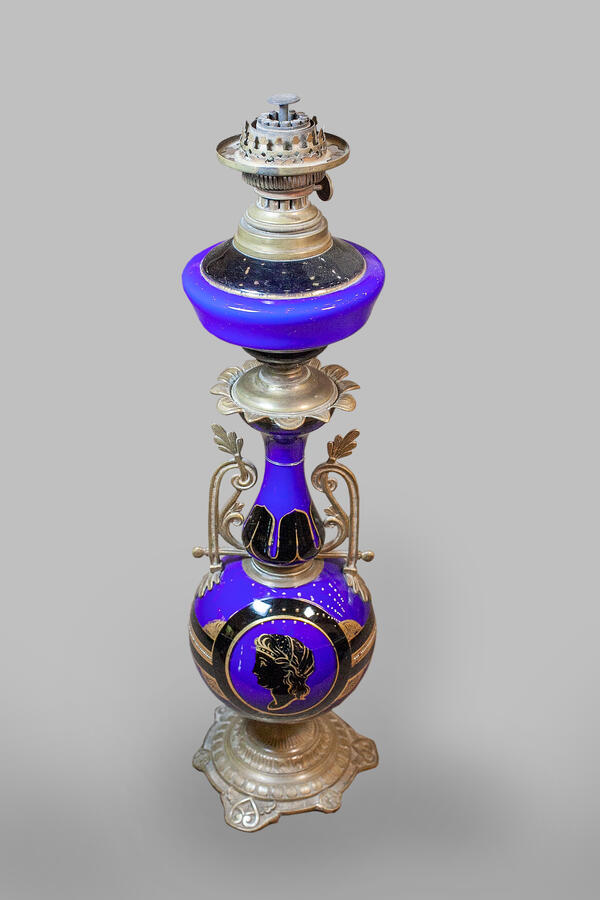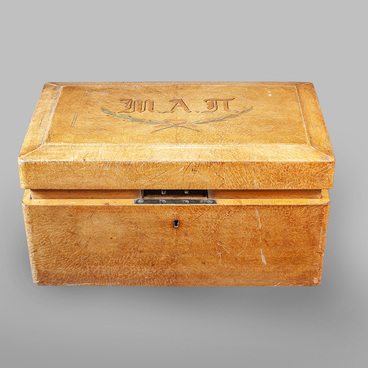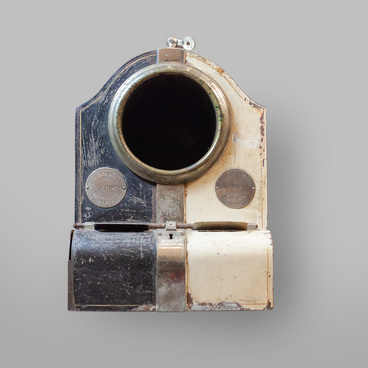The “Merchant’s Shop” section of the exhibition “Characters and Events of Vyatka History” houses kerosene lamps. Undeservedly forgotten, nowadays they are mostly used for decorative purposes, although at one point this simple and efficient lighting device conquered entire Europe and Russia in a flash of an eye and instantly replaced candles and oil lamps. The centerpiece of this collection is the lamp designed as an elongated blue glass vase, decorated with an antique-style image of a female head, gilded ornamental handles with monograms, and gilded painting on blue glass.
The design of a kerosene lamp is simple: kerosene is poured into a metal fuel tank. There is a wick, one end of which dips into kerosene, and the other one is used as a light source. For better absorption and wind protection, the wick is equipped with a tall glass tube.
In 1853, Lviv pharmacists John Zeh and Ignacy Łukasiewicz were working on the separation of petroleum products into fractions by distillation. After some time, the inventors obtained kerosene in a laboratory. They started using the liquid in a modernized oil lamp. As a result, a new light source was discovered, which was considerably brighter than all the earlier ones. The invention of a kerosene lamp promoted the development of street lighting — at first in Europe, and then in the cities and towns across the Russian Empire, including Vyatka.
Spare parts for kerosene lamps were mass produced at many enterprises and workshops. Wealthy people decorated their houses with lamps made of gold, glass, and porcelain. As for peasants, they also used kerosene lamps, but their lamps were made of iron, cast iron, and even wood. As a result, at the end of the 19th century, there were a number of large successful factories that produced kerosene lamps and their components. However, decorations for burners were produced by well-known Meissen and Sèvres porcelain manufactories.
Kerosene lamps by John Zeh and Ignacy Łukasiewicz became the world’s most popular light source for a long time.
The design of a kerosene lamp is simple: kerosene is poured into a metal fuel tank. There is a wick, one end of which dips into kerosene, and the other one is used as a light source. For better absorption and wind protection, the wick is equipped with a tall glass tube.
In 1853, Lviv pharmacists John Zeh and Ignacy Łukasiewicz were working on the separation of petroleum products into fractions by distillation. After some time, the inventors obtained kerosene in a laboratory. They started using the liquid in a modernized oil lamp. As a result, a new light source was discovered, which was considerably brighter than all the earlier ones. The invention of a kerosene lamp promoted the development of street lighting — at first in Europe, and then in the cities and towns across the Russian Empire, including Vyatka.
Spare parts for kerosene lamps were mass produced at many enterprises and workshops. Wealthy people decorated their houses with lamps made of gold, glass, and porcelain. As for peasants, they also used kerosene lamps, but their lamps were made of iron, cast iron, and even wood. As a result, at the end of the 19th century, there were a number of large successful factories that produced kerosene lamps and their components. However, decorations for burners were produced by well-known Meissen and Sèvres porcelain manufactories.
Kerosene lamps by John Zeh and Ignacy Łukasiewicz became the world’s most popular light source for a long time.
